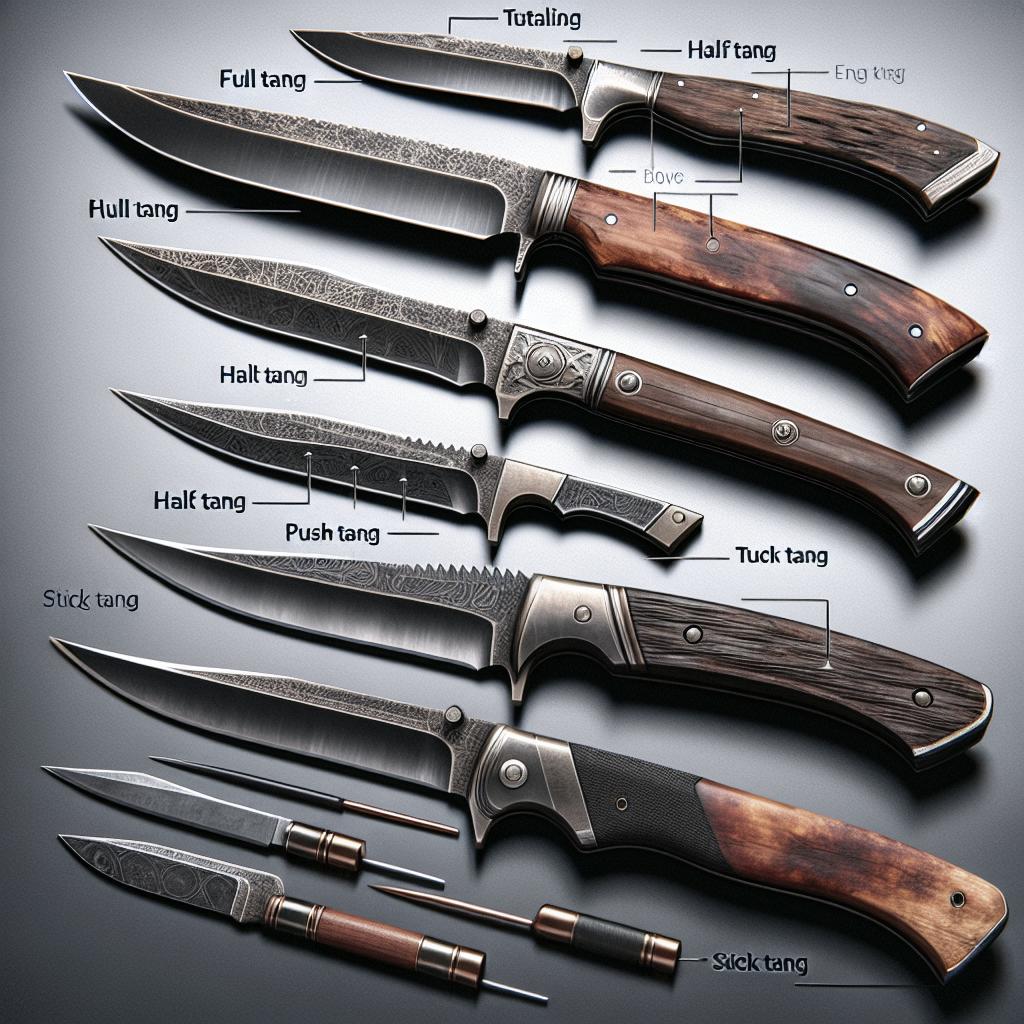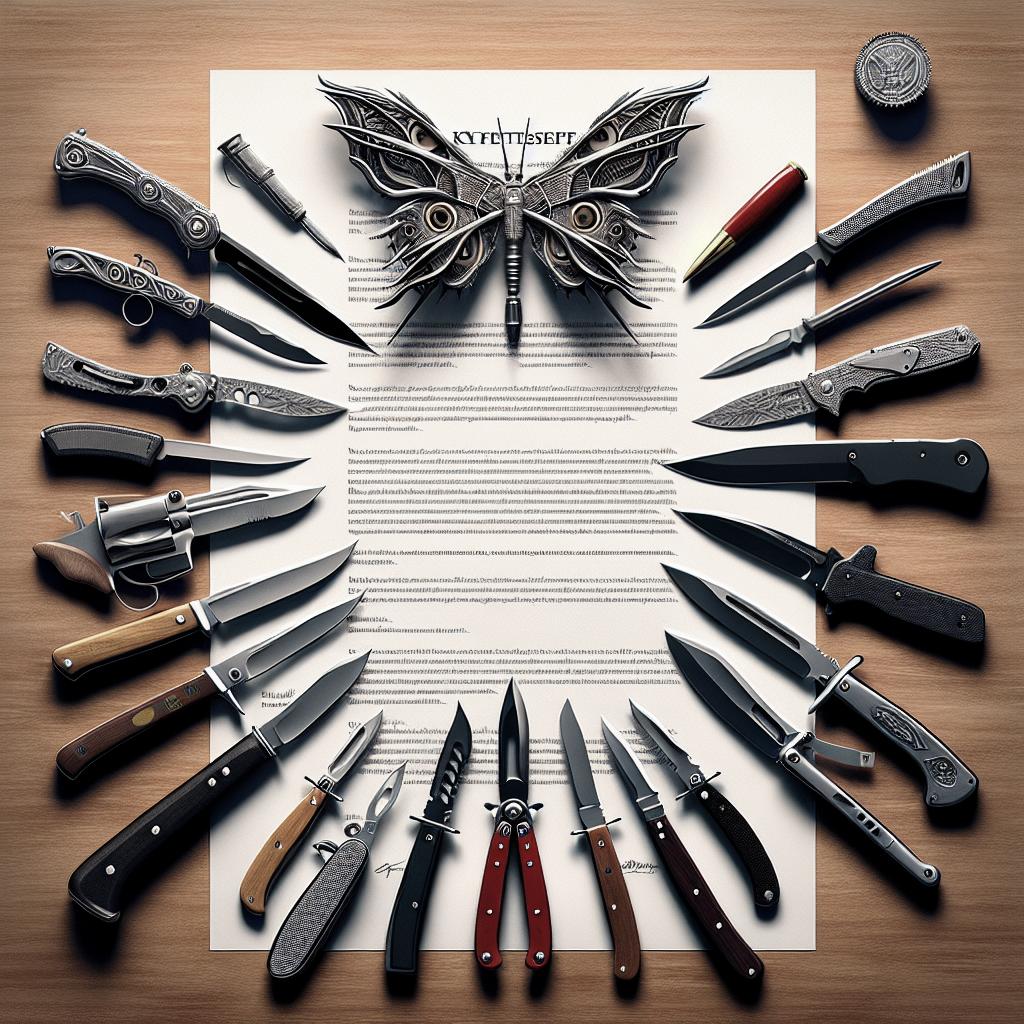Differences in Knife Tang Types
In the world of knives, understanding the various knife tang types is crucial for anyone from chefs to outdoor enthusiasts. The tang is the part of the knife that extends into the handle, and its construction significantly affects a knife’s performance, durability, and ease of use. This blog post explores the differences between full-tang and partial-tang knives, diving into various subtypes, including hidden, encapsulated, and skeletonized tangs, among others. You’ll learn why you might choose one tang type over another and gain insights into when each type performs best. By the end, you’ll have a comprehensive understanding of which knife tang style is right for your specific needs.
What Is a Knife Tang?
A knife tang refers to the part of the blade that extends into the handle. It’s an integral component of the knife’s overall construction, contributing to both balance and strength. Knives with well-constructed tangs generally offer better durability and reliability, particularly under demanding conditions.
The tang can significantly influence the knife’s handling. A full-tang knife, where the tang extends the full length and width of the handle, often provides more balance and strength. In contrast, partial tangs, which are shorter, may reduce weight but also the knife’s durability. Understanding the tang is crucial for making informed decisions about which knife to use for specific tasks.
What Does Full-Tang Mean?
Full-tang knives have a tang that runs the full length of the handle, providing maximum strength and balance. These knives are particularly favored in culinary arts and survival scenarios. The tang can be seen from the top and bottom of the handle, offering a solid grip and reducing the risk of breakage during heavy use.
A full-tang knife tends to be more durable and stable because of the complete connection between the blade and handle. This construction minimizes weak points, making the knife less likely to bend or break under pressure. The solid feel in hand makes it a preferred choice for tasks requiring precision and control.
What Does Partial-Tang Mean?
Partial-tang knives feature a tang that does not extend the full length of the handle. These types of knives are generally lighter, which can be advantageous in situations requiring nimbleness over brute strength. The tang may be glued or pinned, providing adequate support for lighter tasks.
Though not as strong as full-tang knives, partial-tang knives offer improved maneuverability and can be more comfortable to use for extended periods, especially when the task at hand doesn’t require significant force. They’re often more affordable, making them an attractive option for general kitchen or utility use.
What Are the Different Types of Full-Tang Knives?
Hidden Tang
Hidden tang knives have the tang embedded within the handle, making it invisible when viewed laterally. While still offering the robustness of a full-tang design, hidden tangs are favored for their sleek aesthetic. The handle material typically encapsulates the tang completely.
This type is popular in craftsmanship where the visual appeal of handle materials is prioritized. They are commonly used in kitchen knives as well as in custom knife designs where the wood or material finish of the handle is a significant feature.
Encapsulated Tang
Encapsulated tangs are encased within handle materials that surround the tang completely. This provides a unique blend of strength and seamless handle integration, preferable for those who want the strength of full-tang without exposed metal edges.
The encapsulation process offers additional protection against moisture and debris infiltration, enhancing longevity and reliability in outdoor or kitchen environments. This type of tang is particularly useful in knives used in wet conditions.
Extended Tang
Extended tang knives have a tang that protrudes past the end of the handle. This design is often used in survival and tactical knives where the extended portion can serve additional functions, such as a pommel or a hammering surface.
The robust nature of extended tangs, paired with their multifunctional capability, makes them ideal for heavy-duty outdoor activities. The protruding tang can be a crucial survival feature, doubling as a tool for pounding or scraping.
Skeletonized Tang
Skeletonized tangs are drilled or cut out to reduce weight without compromising integrity. These knives offer the full strength benefits of a full-tang while being lighter, thus enhancing portability and ease of use.
Skeletonized tangs are favored in scenarios where the knife must be carried for long periods, such as hiking or military missions, where every ounce counts. They maintain the necessary strength while focusing on ergonomics and comfort.
What Are the Different Types of Partial-Tang Knives?
Rat-Tail Tang
Rat-tail tangs, a type of partial tang, are narrow and extend through the handle, often fastened at the end. This design allows for knives with a more decorative handle, as the tang takes up less space.
While not as strong as their full-tang counterparts, rat-tail tangs can still be quite functional in less demanding tasks. They’re commonly found in kitchen knives designed for specific functions, like filleting, where excessive strength is unnecessary.
Tapered Tang
Tapered tangs gradually decrease in thickness towards the handle’s end, balancing the weight distribution for a more comfortable grip. This design requires precision engineering to ensure durability despite its narrowing profile.
They’re typically found in knives where weight balance is essential, such as chef knives, providing the cutting precision professionals demand. The compromised material thickness at the end requires a sturdy and quality construction for reliability.
Push Tang
Push tangs involve a shorter tang pushed into the handle, secured through friction or adhesive. This design allows for more flexible handle aesthetics and materials, often used in knives where appearance is a priority.
While push tangs might not offer the best durability, they’re excellent for custom knife makers focusing on handle designs. These are typically seen in ornamental or collection pieces, where use is occasional, and strength isn’t a priority.
When Should You Use Full-Tang Knives?
Full-tang knives are best suited for tasks requiring force and durability. They excel in demanding environments, such as outdoor survival situations and professional kitchens. Their balance and strength provide the user with confidence in handling heavy chopping, carving, and various cutting tasks.
Choose full-tang knives when you need a reliable tool that offers stability and precision. Whether in a commercial kitchen or a wilderness setting, these knives withstand wear and tear, providing valuable assurance of longevity and safety.
When Should You Use Partial-Tang Knives?
Partial-tang knives are suitable for lighter tasks where precision and ease of handling are more critical than brute strength. They’re often used within home kitchens for simple cutting tasks or for crafting projects where the knife’s balance is key.
They’re ideal when you prefer a lightweight option or cost-effective solution without the necessity of excessive durability. When cutting softer materials or performing fine, intricate jobs, partial-tang can be a practical choice.
The Bottom Line
| Tang Type | Characteristics | Best Used For |
|---|---|---|
| Full-Tang | Maximum strength and durability, extended through the handle | Heavy-duty tasks, professional kitchens, survival knives |
| Partial-Tang | Lighter, less costly, partially extends into handle | Precision tasks, lightweight use, budget options |
| Hidden Tang | Encapsulated within handle, aesthetic focus | Custom designs, kitchen knives with wooden handles |
| Encapsulated Tang | Fully encased, protected from elements | Wet environments, integrated design |
| Extended Tang | Protrudes beyond handle, multifunctional | Outdoor and tactical applications |
| Skeletonized Tang | Weight reduced by cut-outs | Portable, lightweight tasks requiring endurance |
| Rat-Tail Tang | Narrow, runs through handle end | Decorative handles, less demanding use |
| Tapered Tang | Thinner towards handle end, balance focused | Cooking, precision work |
| Push Tang | Inserted into handle, friction secured | Ornamental pieces, occasional use |


